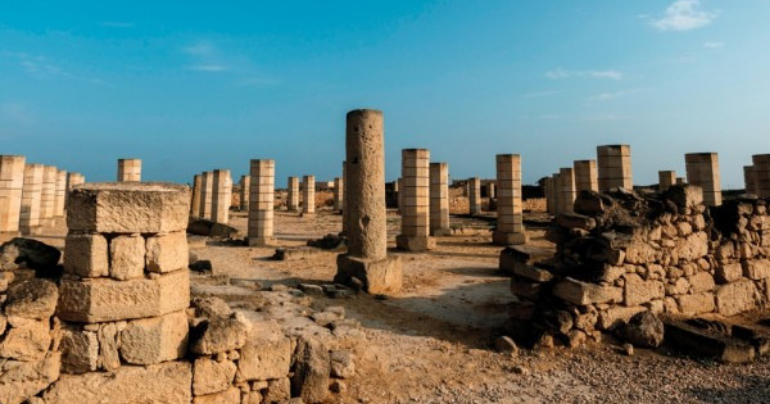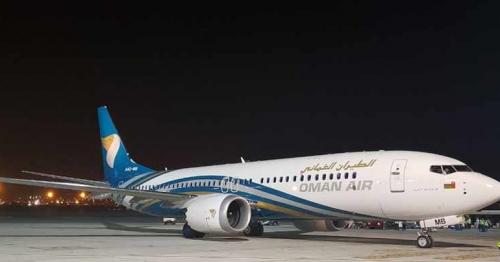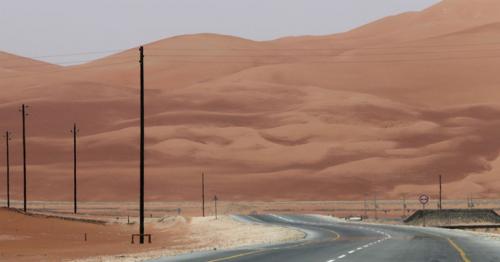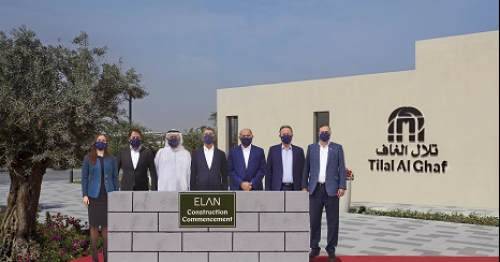Salalah’s riches attract tourists this Khareef
Salalah is the heart of the Dhofar governorate and its main city. It is culturally rich with many sites of historic interest such as Al Baleed, the site of the footprints of the camel of the Prophet Saleh, and other religious monuments including the tombs of the Prophets Ayoub and Imran ( PBUH).
The entire area is exceptionally beautiful as it has a number of natural springs such as in places like Humran, Arzat, Tabraq and Athoum. It is also known for its soft sand beaches which attract tourists throughout the year. The weather in Salalah is moderate during the Khareef season. It is the biggest Wilayat of the Dhofar governorate in terms of area and population.
Salalah is rich in natural and tourist landmarks and attractions. It is known for its high-rise green mountains, charming water features and soft beaches as well as caves and nature reserves. One of the most popular attractions of the Wilayat is the Ittin plain. It is a strip of high mountains along with magnificent plains which are covered by greenery during Khareef season.
It creates a very natural and fascinating view which delights tourists. Along the road of the Ittin plain, there are shops, restaurants, kiosks of ‘mashakeek’ and other popular food items. There are also different types of children’s sports, public toilets, and prayer rooms for men and women available on both sides.
Water features
Salalah has a number of natural springs, including Ain Hamran, which is located north of the Al Mamourah area. The Wilayat also has Ain Arzat which is one of the biggest springs. Around 17 km away from Salalah, it is an important destination for tourists, students and photography enthusiasts during Khareef season. Also, there is Sahalnoot spring which is about 15 km away from Salalah. The Tobruk and Athoum springs which are located in Salalah are famous for their abundant water. They are considered permanent water features. They have beautiful natural landscapes as they are situated in the mountains under the shade of different trees.
Jarziz spring is located in the Aten area. It has a natural pool which extends along several kilometres of the plain. There are other water features in the Wilayat, including Arabot, Ashouq, Mishdeed, Ghait and Manhal.
As well as lots of springs with good water levels, there are many different species of trees, including Sidr, Nargil and figs spread in the area. It is one of the more popular tourist destinations during Khareef season.
Al Mughsail beach
Lots of tourists flock to the Al Mughsail beach which is located west of Salalah and has soft silver sands. Tourists here enjoy the views of a natural spring which begins in gaps in the rocks near the beach and goes on for several metres. Known for its loud roar, it can be seen from the cave of Al Muzainif of Al Mughsail which is considered to be one of the most beautiful caves of the area and which attracts large number of tourists.
Salalah has a number of other caves including Ishour cave in Hamreer. There are a number of natural reserves including Khor Al Mughsail, located on the eastern end of Jabal Al Qamar. Khor has its own importance in preserving important types of indigenous and migratory birds which come to the creek as there is abundant food throughout the year.
There is also Khor Al Baleed Reserve which has fascinating historical sites and natural beauty. The archaeological area of Al Baleed is located on the banks of the creek which is known for its biological diversity. The site has been fenced to protect the ancient Al Baleed area and to preserve its natural life. This is the first archaeological park in the Sultanate of Oman. It combines history and natural resources. A number of tourist facilities have been established on the side of the creek away from the archaeological site which can be accessed by a road bridge over the creek.
The Khor Awqad sanctuary is one of the sites where birds like the heron frequently come and nest. Among other streams are Khor Al Qurm, Al Sagheer and Al Kabeer, all located on the road which leads from Salalah to Raysut. These are known for the unique diversity of plants as 13 species of plant and nine types of fish can be seen.
Historical sites
Salalah is famous for its monuments, including Al Baleed area which is located between Al Dahareez and Al Haffah. This is one of the oldest historic cities and the most important commercial port. Earlier, it was known as Al Dhiffah or the bank. It had flourished in the twelfth and sixteenth centuries. The remains of the city can still be seen and, in view of the archaeological evidences and studies of the organic materials and pottery, researchers are of the view that the site is of the pre-Islamic period.
After the arrival of Islam, it enjoyed unique architectural splendour, which is evident through its big mosque, which is one of the oldest and has 144 columns. There is also Al Baleed fort which features a number of metallic coins. The Kot Hamran fort is an archaeological landmark of the Wilayat. It is situated about 14 km away from Salalah city on the road leading to Wilayat Taqa. Among other major historical sites of Salalah is the tomb of the Prophet Imran or Umran (PBUH), located in the Qouf area of Salalah, next to the Haffa House. It is a very long shrine inside a rectangular room surrounded by a small garden and a modern mosque called the Mosque of the Prophet Imran.
Another popular tourist site is the tomb of the Prophet Ayyub ( PBUH) located in the north-west of Salalah, at the top of Jabal Ittin. The site of the footprints of the camel of the Prophet Saleh are also one of the most popular sites for tourists throughout the year. Located in the centre of Al Haseelah and mentioned in the Holy Quran, it is said that there are clear footprints of the she-camel of the Prophet on the small hill. It has been fenced and covered to prevent erosion. It is near the remains of the small cave of Bani Fouqah and serves as a passage for tourists.
Traditional crafts
Salalah has diverse types of traditional crafts, arts and industries which range from carpentry and blacksmithing to sewing and embroidery. Some of the people look after livestock as well agriculture. They have industries involving manufacturing different types of boats, pottery, sweets, gold and silver jewellery, woodcraft, and leather items.
Ahmad Al Marhoun, who is in charge of tourism awareness in the Tourism Promotion Department at the Directorate General of Tourism of the Dhofar governorate said: “With the cooperation and partnership of the Directorate General of Scouts and Guides of the Ministry of Education, the Directorate General of Tourism of Dhofar governorate participated in programmes and activities and presented lectures to create awareness about the importance of the protection of tourist sites, public facilities and introduced tourists services available in the governorate.”
Al Marhoun said that the activities included a programme for 50 participants of the boys’ summer held on July 23 during which visits to Hawana Aqua Park were organised so that they could learn about tourism projects. A summer scout camp will also be organised for 50 participants to visit the tourist sites of Dhofar and deliver a lecture on awareness of tourism in August. The first nature forum for female guides will be held on August 24.
The Bilad Point Tourist Resort is being coordinated for the visit of 50 female guides to learn about the tourism facilities and hotel services. Also, there will be an awareness speech about tourism in the Dhofar governorate.
Tourists’ views
Faisal Al Mawali from South Al Batinah governorate said: “The Khareef season is exceptional this year. The misty and beautiful weather is not confined to the mountainous areas but can also be found in the cities. Salalah is known for its diversity of terrain, mountains, plains, seas, rivers and caves. These are the elements which make the sites attractive for tourists during Khareef season.”
“We enjoyed beautiful weather and the greenery of mountains and plains. Drizzling rains follows you everywhere in Dhofar governorate,” said Mohammed Al Wardi. Abeer Al Araimi, from Sur said: “The landscape and the beautiful weather of Dhofar governorate are awesome. This beautiful atmosphere relieves you from the fatigue of day -to-day life” .
tag: oman , tourism , ministry-of-tourism , khareef
Share This Post






